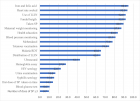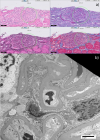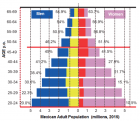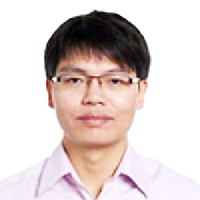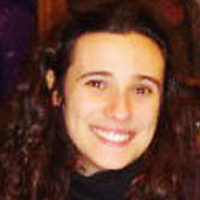Table of Contents
How Condylar modifications occurs
Published on: 31st December, 2018
OCLC Number/Unique Identifier: 8049485637
Functional appliances used in correction of class II malocclusions are shown to modify the neuromuscular environment of dentition & associated bones. There are many studies related to the skeletal, dental and neuromuscular changes which are evaluated cephalometrically, clinically as well as with the recent diagnostic aids like MRI. The aim of this short communication was to highlight and discuss the different aspects of condylar modifications and its role in its growth.
The Twin Block has higher effectiveness & comfort as compared to other removable functional appliances [1.2]. The action of Twin Block & Bionator is for 24 hours so effects are more with these appliances. Over the years, several theories have emerged attempting to shed light on condylar growth. One of the earliest theories, the genetic theory, suggests the condyle is under strong genetic control like an epiphysis that causes the entire mandible to grow downward and forward. Although this may be related more to development of the prenatal than postnatal condyle, the theory does indirectly question the effectiveness of orthopedic appliances in condylar growth as proposed by Brodie [3,4]. Several long-term investigations actually showed clinically insignificant condylar growth modification after continuous mandibular advancement with a reasonable retention period in human beings although the initial treatment results appeared encouraging. This leads to the conclusion that the general growth of the condyle appears relatively unalterable in long-term studies.
A second hypothesis based on the earliest available acute and blind EMG monitoring technique, suggests that hyperactivity of the lateral pterygoid muscles (LPM) promotes condylar growth. Rees reported that other muscles and tendons, including those of the deep masseter and temporalis, also attach to the articular disk region. Attachments of the LPM to the condylar head or articular disk may be expected to cause condylar growth, but anatomic research has not found evidence that significant attachments actually exist [5,6]. The LPM tendon is observed attaching, however, to the anterior border of the fibrous capsule that in turn attaches to the fibrocartilage of the condylar head and neck anteriorly. At the same time, it is doubtful that initial hyperactivity could occur where the LPM muscle has been shortened by continuous mandibular displacement therapy. By using LPM myectomy in rats, which may have disrupted condylar blood supply, Whetten and Johnston found little evidence that LPM traction had any pronounced effect on condylar growth. More recently, permanently implanted longitudinal muscle monitoring techniques have found that the condylar growth is actually related to decrease postural and functional LPM activity. This notion was also supported in human studies by Auf der Maur, Pancherz and Anehus- Pancherz, and Ingervall and Bitsanis that reported decreased muscle activity. The LPM hyperactivity theory brought forward by Charlier et al. Petrovic, and later espoused by McNamara however, was important in prompting further investigations in muscle-bone interactions [7,8].
A third hypothesis, the functional matrix theory, postulates the principal control of bone growth is not the bone itself, but rather the growth of soft tissues directly associated with it. Although this was supported in part by investigations testing the different growth and developmental responses between the condyle and epiphysis, there has been no explanation as to exactly how condylar growth would be stimulated. Thus, this theory’s validity has been questioned. One of the reasons was that there was little explanation of the specific mechanism by which the condyle was stimulated to grow. Endow and Hans presented an excellent overall perspective suggesting that mandibular growth is a composite of regional forces and functional agents of growth control that interact in response to specific extra-condylar activating signals [9,10].
Preventing Peri-implantitis with a proper Cementation Protocol and with the consideration of alternatives to Cement-Retained Implant Restorations
Published on: 26th October, 2018
OCLC Number/Unique Identifier: 7929300020
Successful implant restoration is depending on an adequate surgical and prosthetic protocol. In the last few years an increase in Peri-Implantitis has been attributed, in part, to the excess cement left around the implant collar and threads, leading in many cases to bone loss and even the complete failure of the implant treatment [1-5].
This article will attempt: 1. To describe a proper cementation protocol for cement-retained implant restorations to reduce cement induced implant failures, and 2. To review the alternative implant restorative options to cement-retained crowns such as screw-retained restorations, screwless and cementless implant restorations, screw-retained-cemented implant crown, angulated screw channel restorations, the lingual locking screw-retained restorations and the multi-unit abutment restorations.
Staining susceptibility of recently developed resin composite materials
Published on: 25th July, 2018
OCLC Number/Unique Identifier: 7814985899
Objectives: To evaluate the colour stability of 3 recently developed resin based materials continuously exposed to various staining agents.
Methods: 144 disc-shaped specimens were made of each of the 3 tested composites (Essentia, Brillant, Inspiro). Half of them were of 1mm thickness, the other half 1.2mm thickness. The thicker group was than polished up to 4000 grit and reduced to 1mm thickness, too. All specimens after 24 h dry storage in an incubator (INP-500, Memmert), received an initial colour measurement by means of a calibrated reflectance spectrophotometer (SpectroShade, MHT, Niederhasli, Switzerland). Specimens were then divided into 6 groups (n=6) and immersed in 5 staining solutions or artificial saliva (control). All specimens were kept in an incubator at 37°C for 28 days. Staining solutions (red wine, curry mixed water, curry mixed oil, tea and coffee) were changed every 7th day to avoid bacteria or yeast contamination. After 28 days of storage spectrophotometric measurements were repeated and L*a*b* scores once more recorded to determine the colour (ΔE00) changes.
Results: All tested materials showed significant color changes after 28 days staining immersion.
When considered over a black background ΔE00 of polished samples varied from 1.7 (Brillant/distilled water) to 24.1 (Brillant/wine).
When considered over a white background ΔE00 of polished samples varied from 1.1 (Essentia/distilled water) to 32.5 (Inspiro/wine).
When considered over a black background ΔE00 of unpolished samples varied from 1.1 (Essentia, Inspiro/distilled water) to 25.8 (Essentia/wine).
When considered over a white background ΔE00 of unpolished samples varied from 1.4(Inspiro/distilled water) to 33.1 (Inspiro/wine).
Conclusions: Staining of restorative materials seems to be dependent on the composition of the product itself. Unpolished samples demonstrated to be more prone to staining than the polished ones

HSPI: We're glad you're here. Please click "create a new Query" if you are a new visitor to our website and need further information from us.
If you are already a member of our network and need to keep track of any developments regarding a question you have already submitted, click "take me to my Query."









